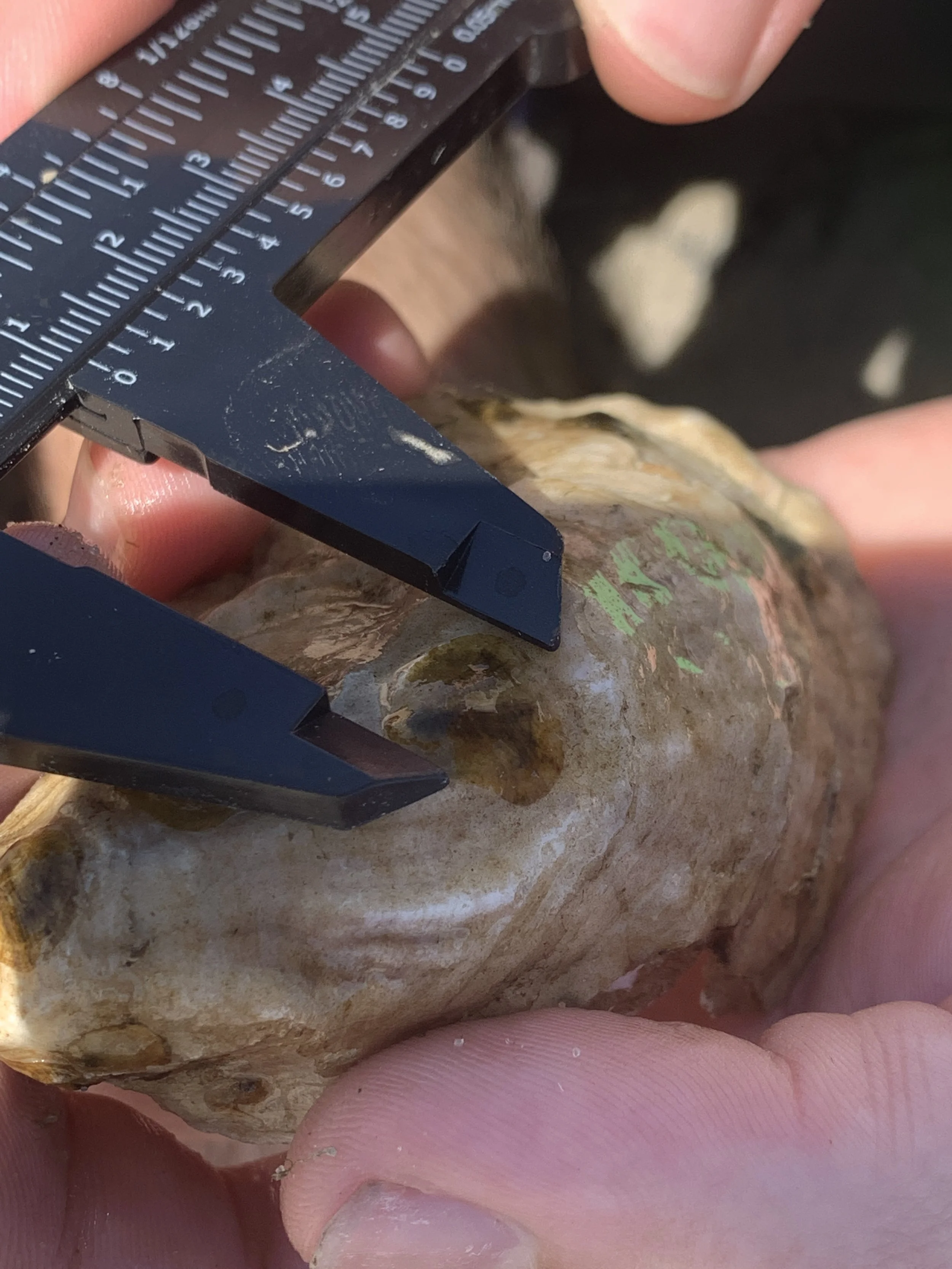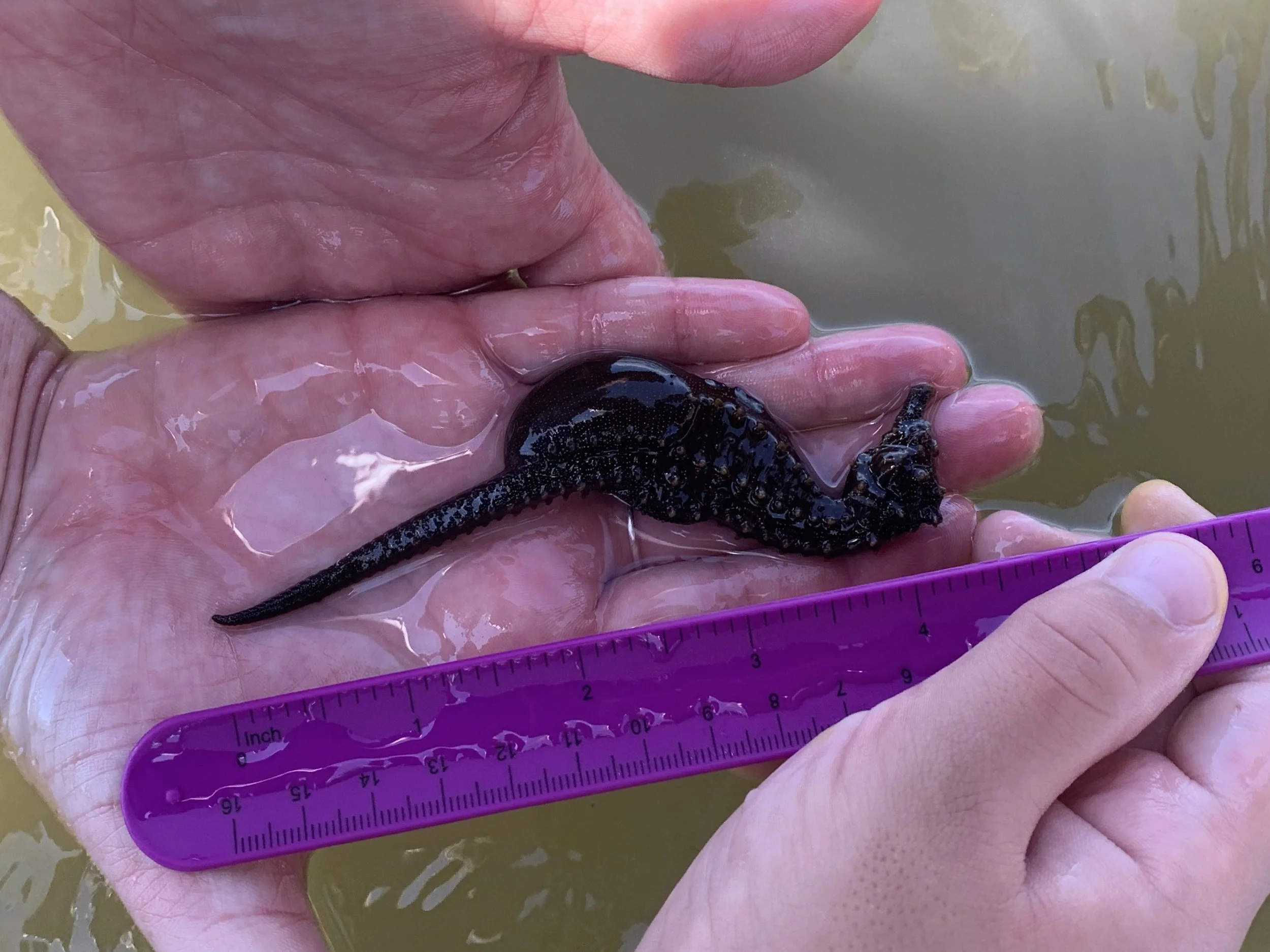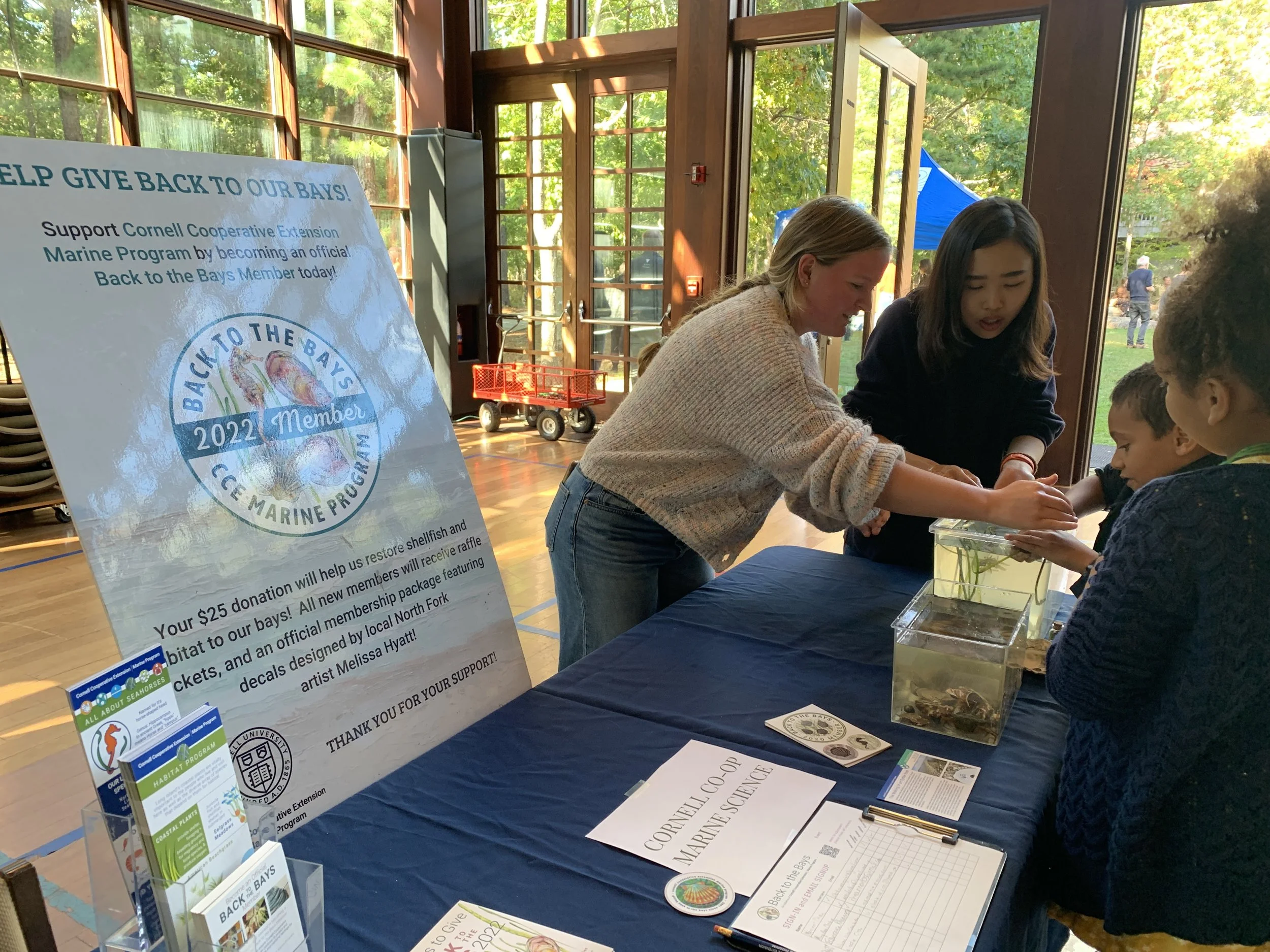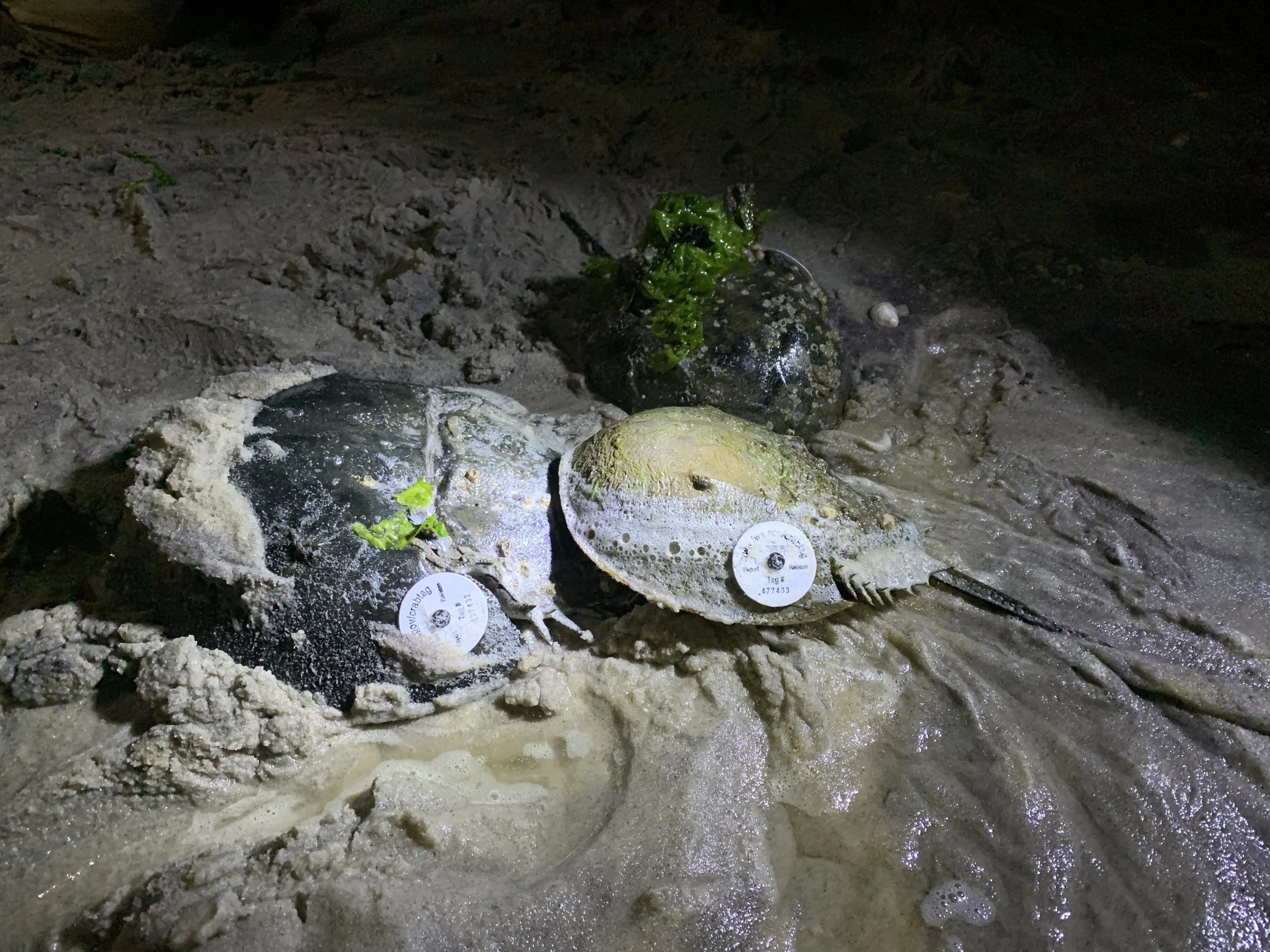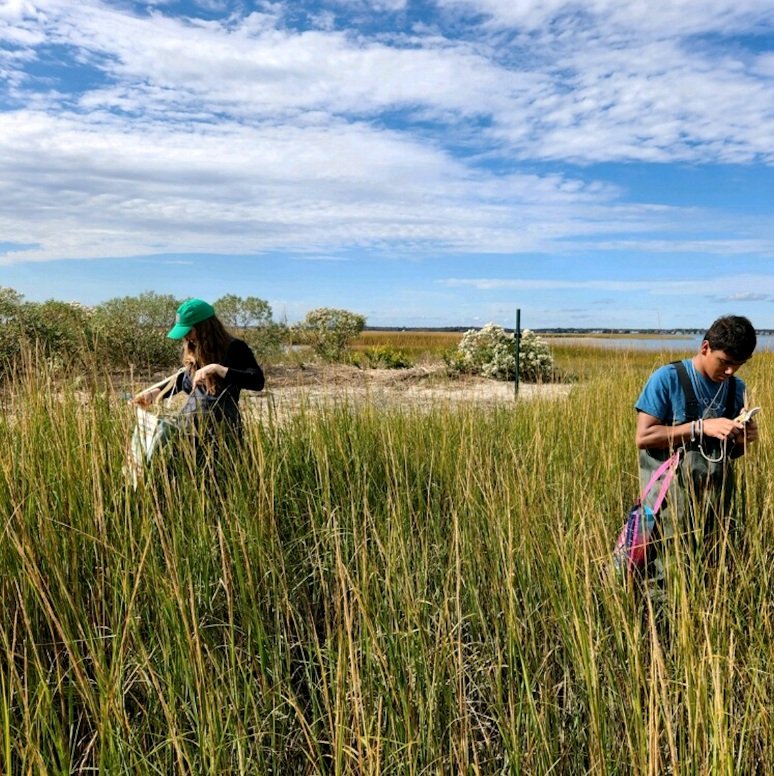
Become a
Back to the Bays Volunteer or Intern
Today
Back to the Bays Stewardship Program
In 2024 we transitioned our previous Membership program into a network of Stewards. Our hope is that anyone interested in helping us to care for our local waters will sign on as a Steward. The $25 contribution enables us to continue engaging the public in our meaningful restoration work.
Volunteering + Internships
Throughout the year, we take on volunteers and interns who wish to contribute their time and hard-working hands on a more regular basis. Back to the Bays Interns and registered volunteers play a crucial role in our successful operation, and we intend to continue providing select opportunities for dedicated individuals to work alongside our scientists and educators. As with all of our public stewardship sessions, volunteers and interns can receive official community service hours for school, or college credit as needed. If you are interested in committing to an internship or volunteering on a particular project, review our project areas and apply below.
We are currently accepting applications for our 2026 Summer College Internships.
Summer 2026 Needs:
2 to 3 general Back to the Bays Interns to assist with a variety of restoration, science, and outreach initiatives
1 dedicated Art/Science Education Intern to assist primarily with education, outreach, and communications
Fall, Winter, and Spring internships are occasionally available. If you are interested, you may still apply below and notify our intern coordinator, Hazel Wodehouse, at hew57@cornell.edu.
Intern, Jackie Glaser, spotted her first seahorse during a seahorse population survey
What we do
Maximize your impact by becoming a Back to the Bays Intern
Looking for an opportunity to help Back to the Bays while advancing your career goals? We have internship opportunities year-round.
Back to the Bays Interns gain hands-on experience participating in various CCE Marine Program projects, from aquaculture to habitat restoration to youth education. Interns assist CCE staff in promoting awareness of our restoration work both in person and on social media, and help engage the public at our outreach events, all while developing knowledge and skills in marine science and environmental communication.
2026 Summer Intern Requirements
Seeking 2 to 3 general Back to the Bays Interns to assist with a variety of restoration, science, and outreach initiatives (must be enrolled or recent graduate of a college program in marine, biological, or environmental sciences, or related field)
1 dedicated Art/Science Education Intern to assist primarily with education, outreach, and communications (may be pursuant of a career in communications, education, art, science or related field, and have a passion for conservation and engaging with the public)
Minimum 10 hours/week. Some evening and weekend events will be expected.
Interns must be over 18 (except for our Junior Steward Certificate)
All internships are unpaid at this time, but college credit is available upon request.
If you have questions, contact Volunteer Coordinator, Hazel Wodehouse, at hew57@cornell.edu.
Intern Blogs
Junior Steward Certificate
We offer an introductory level experience for high school students, that allows you to earn an official Stewardship Certificate, and gain valuable service experience to build your resume. Junior Stewards make a commitment to attend a series of our public Stewardship Sessions throughout the year. Activities include eelgrass restoration, tending to our coastal plant gardens, shellfish aquaculture, bay scallop and clam seeding, oyster reef deployment, and more. Opportunities to assist with setup and cleanup are available to earn additional hours and further engage with our CCE Marine experts.
Questions can be directed to our Volunteer Coordinator, Hazel Wodehouse.
Learn more about our Back to the Bays Stewardship Program
Post-Grad Specialization
We occasionally pair select individuals directly with a CCE staff member working on a focused project in our Habitat or Aquaculture Programs. These opportunities are offered on a case-by-case basis, to highly motivated, independent, and experienced individuals who are seeking a more rigorous internship experience, or are interested in pursuing a particular scientific research question. Preference is given to those who have completed a Bachelor’s degree in marine or environmental science, or a related field. If you think this opportunity suits you, complete an application and email Volunteer Coordinator.
Habitat
Interns specializing in our Habitat Program may focus on:
Eelgrass + Coastal Plant Restoration
Sediment Analysis
Seahorse Monitoring
Required locations: Hampton Bays, Southold, occasionally off-site
Aquaculture
Interns specializing in our Aquaculture Program may focus on:
Oyster Aquaculture
Bay Scallop + Clam Seeding
Site Maintenance + Monitoring
Required locations: Shelter Island, occasionally Southold Hatchery



